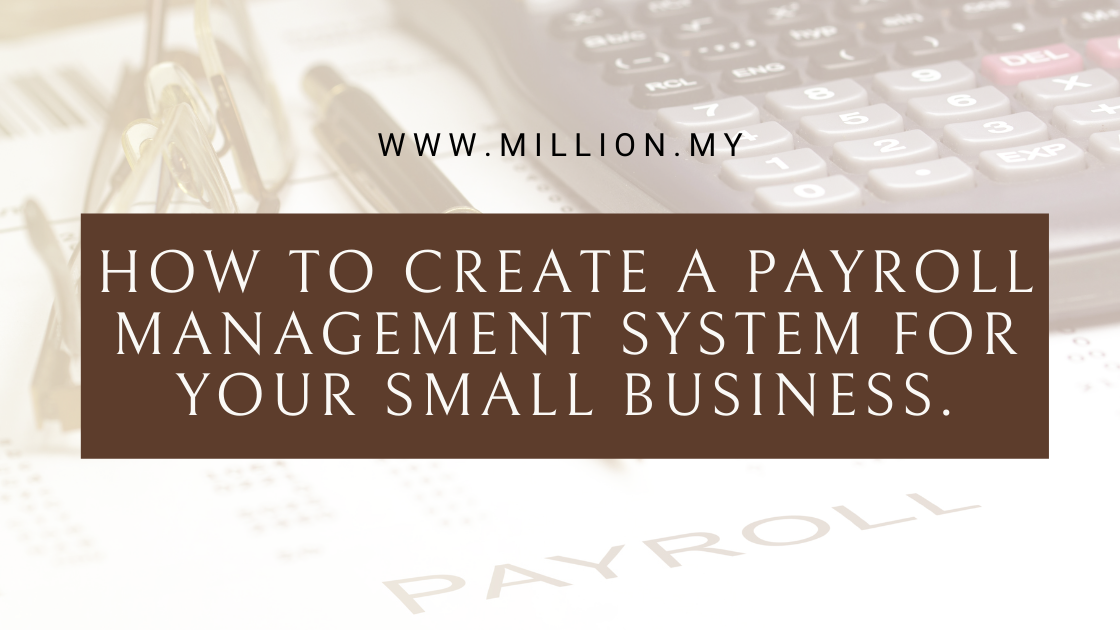
Payroll management stands as a briefcase term that is applied for running, remitting payroll taxes, and saving the relevant documents. For business owners, these tasks are bulky, burdensome, and time-consuming. Payroll management based on payroll software relieves this burden by performing all these tasks in a programmed and automatic way. Payroll software works as a helping hand as it enables business owners to focus more on the product rather than calculating employees’ income and gross taxes.
A Roadmap to Setup a Payroll Management System for Small Business
It seems a complex stretch to create a Payroll management system for small businesses but the truth is it is a little bit tricky and not as tough as it is considered. Here is A stepwise guide to direct you about how to create a payroll management system for your small business
Step 1: Select the best payroll software
The fundamental and crucial step is to select the best payroll software. Your choice of payroll software must align with your needs and requirement. The following tips will help you in the selection of the best payroll software for your small business
- Pen down your non-negotiable needs
- Search the payroll system according to your business and industry
- Check the pricing plan
- Go for a free trial
- Finalize your decision
Step 2: Collect information for payroll software
You must need to gather all the details and information that your payroll software requires. Your payroll software ask for some information that includes
- Basic information about employees like names, position, etc
- Security numbers
- Recent contributions and deductions
- Tax filing status
By using the above-given information, you can set up your payroll software for
- Make an employee ID number (EIN)
- Get a state tax ID number for all the areas your employee lives.
- Set up the payroll process (monthly, weekly).
- Apply a time track to calculate employee working hours.
- Open a business bank account for payroll reconciliation.
- Gather bank details of your employees
Step 3: Estimate the gross pay and net pay
Once you have done collecting all the information and details to process payroll, you can initiate your work and start calculating paychecks. You are suggested to collect timesheet data, including the overtime, and examine if your payroll is integrated with time tracking software or maybe it already has one.
Finally, You can calculate gross pay eliminating the tax reductions and health aids. For calculating net pay you need to subtract the payroll deductions from the gross pay.
The payroll reductions include:
- Pre-Rate deductions- health insurance, evacuation plans, civil security taxes.
- Tax Withholdings- Federal, local, and state income tax withholdings.
- Post-Tax deductions- Allowance plan contributions, 401(k) donations, wage garnishment.
Step 4: Add the employer payroll taxes
The employers have to pay taxes that includes employee compensation, Federal unemployment tax (FUTA), state unemployment tax, and other local taxes. Before sending the paycheck in your payroll software, you must ensure the reconciliation and proper working of payroll software. This ordinary and unnecessary process may sometimes bring major errors in the software.
Step 5: Set up payroll entry system
To facilitate payroll journal entries, payroll software must integrate with accounting software. This includes operator wages, payroll taxes, and payroll deductions. It is advisable to attach the pay stubs when you send out a paycheck, irrespective of your payment mode, and this step enables employees to cross-check for errors.
Step 6: Documentation and preparation of payroll journals
After making payments, you have to check for tax payments to check you pay state taxes on behalf of the employees residing in another state. For this purpose, your operators require a state tax ID, which you can obtain from the concerned state tax website. Particularly, you must start the first payment manually to simplify automatic payment through software.
A payroll journal entry holds all the costs to handle payroll, consisting of wages, employee- and employer-paid payroll taxes, and payroll deduction
Step 7: Generate payroll documents
All the payroll software has state tax filing obligations and designs to simplify your business and payroll deductions so the final step is to send the previous earning reports to employees and internal revenue service. You are suggested to consult an auditor for verifying the tax document.
Before You Leave
Payroll software assists business owners and managers as it takes over the charge of time-consuming and bulky tasks and performs them in an automated manner. It reduces the chance of error and performs the operations smoothly. Not only for owners and managers, but payroll software also gives benefits to the employees as they can easily cross-check for errors. Using payroll software for business makes business owners, managers, and partners more relaxed, focused, and concentrated on work rather than calculating employees’ salaries and taxes.







